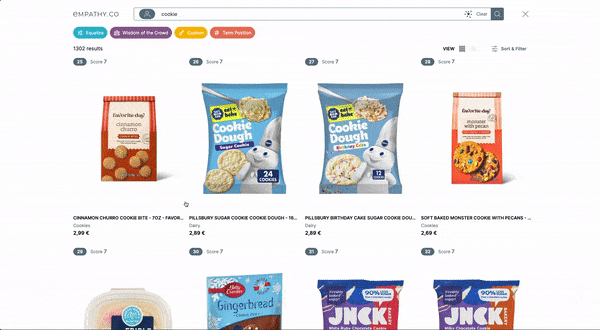Ethical Commerce Alliance investigates social media, ecommerce & protecting privacy
Ethical Commerce Alliance investigates social media, ecommerce & protecting privacy
Takeaways from an expert panel discussion
A week ago, the Ethical Commerce Alliance (ECA) hosted a panel discussion on social media and ecommerce. With great insights from our expert panellists — Christina Dinar, Pernille Tranberg and Caroline Helbing — we investigated the relationship between ecommerce and social media through the perspectives of ethics, education and industry.

Too long; didn’t read
- Despite data privacy and security concerns with social media, most people are active on at least one platform.
- As a brand, you have to be active on social media if you want to be part of the conversation. But be aware when you publish, this often gives the platform a comprehensive licence to your content.
- Be careful how you interact with your audience, especially with minors. If possible, bring the conversation to your own channels.
- Targeting with personalised content is expected on social media, but don’t be creepy or manipulative.
- As the challenges with social media persist, could brands step up and demand a change?
The trouble with social media
The days of endorsing social media without hesitation are long behind us. Still, the fact that most people are active on at least one social media platform makes this space hard to ignore (WhatsApp, YouTube, TikTok, Facebook, Snapchat, Twitter, etc.). This challenge is twofold: for us as individuals to protect our mental well-being and for our societies to maintain our shared values.
Once made to ‘connect with friends’, these platforms have become an even bigger part of our daily lives adding commerce to the mix. Social media platforms are indispensable for brands if they want to reach customers and stay competitive.
You must be cautious about engaging customers through these platforms as a brand. As the ECA panel discussion pointed out, once content is published, you have little control over what comes next. People will share your post in their own way (sometimes contrary to your original intention and context), and the platform where you publish ultimately controls your content. Often, social media platforms take this a step further. Facebook, for example, states, ‘you grant us a non-exclusive, transferable, sub-licensable, royalty-free, and worldwide license to host, use, distribute, modify, run, copy, publicly perform or display, translate, and create derivative works of your content…’
With all these challenges on social media, is it worth exposing your brand to such an environment?
To engage or not to engage (on Social Media)
As panellist Caroline Helbing pointed out, people will talk about your brand on social media anyway, so the better strategy is to engage on the platform to take part in the conversation and influence it positively.

But what about your brand values? Do they align with those of the platforms?
This concern is even more urgent when children are involved. Most platforms have age restriction policies, usually a minimum of 13 years old. So if your brand targets younger children, are social platforms even the right place to be in? As Pernille Tranberg put it: ‘we should try to keep our kids off social media platforms as long as possible. When the legal age is 13, you know they already start at age 7 or 8’.
This doesn’t mean brands should interact anyway if their target group is below the legal age of the platform. Although children often have a big say in household purchases, still, as a brand, you can uphold your values and boost sales while advertising to parents.
Another insight from the panel was bringing the conversation to your own channel, where you have more control. As social platforms are moving towards in-app sales and commerce, an additional consideration is how you want to use social media. Will you focus on branding or allow for shopping directly from these platforms? Alternatives, like a community forum, focus on communication and enable your customers to interact with each other and your brand.
Considerations (When in Rome…)
So if you decide to be on social media, what considerations should you keep in mind?
As the panel has pointed out, you’re not in control once content is on a social platform. Sometimes this can lead to strong negative expressions about your brand. One example mentioned was referencing (religious) holidays, which can sometimes be misunderstood by the audience or even come across as offensive. Therefore, it’s vital to understand who your audience is and to consider the different ways your message might be interpreted. And if things do get out of hand, it is essential to have a plan ready to mitigate the damage. This is easily overlooked by businesses and leaves them caught off guard when things do go wrong.
Another reason to engage with your customers on social platforms is that they allow for personalised content. And even though some targeting is expected, it’s important not to cross the line where content becomes creepy or manipulating.
For example, be transparent when working with influencers. Let your audience know it’s paid content; don’t try to fool them. Instead, carefully select the influencer: not the one with the most followers, but the person who is the most trustworthy and has a loyal fanbase.
What’s next (Back to the future)
The panel also explored social media strategies from different perspectives. There is no single best way to utilise social platforms, as it all depends on your brand, product and messaging and how you want to engage with your audience. But maybe, the critical point in this debate is the constantly changing dynamic. Today’s top social media platforms might be forgotten tomorrow, as new technologies emerge and their possible applications keep evolving.
Naturally, it’s crucial to re-evaluate your strategy regularly. In the past two years with the pandemic, many people started working remotely and needed to use technologies that enable this new reality. Christina Dinar shared a great reflection that we can evaluate what works and what doesn’t now in a post-pandemic world.
With social platforms, we never had this moment of reflection and evaluation. Like the pre-loaded apps on our phones, social media was installed in our societies and we were encouraged to accept it. As a society, we are waking up to its dark side and dealing with social media problems we couldn’t foresee. Protective steps like content moderation took time to establish. But this approach primarily minimises extremely harmful content and does not fully address the problematic dynamics of social media, like addiction, manipulation, and negative impacts on mental health. It’s like fixing the leaks in a toxic waste container but not dealing with the toxic waste itself.
Reckoning with the consequences of social media is a difficult challenge for everybody involved, from users to governments and brands. As parents and teachers, we need to educate children on how to interact with social media. Governments need to continue to develop and implement regulations that protect people. Researchers can investigate the broader effects on our societies and the impact on the individual.
But also brands and businesses can take an essential role. Ultimately, their monetary investments through advertising are the fuel that keeps this machine running. There might be a significant opportunity for the brands that step up and come up with an alternative. To start negotiating how we want social media to influence our societies.
For more insights and reflections, check out the panel discussion recording.
Curious to learn more and take part in tackling these ethical challenges? Contact the ECA to get involved and get your questions answered. And follow them on Twitter to catch their next event.










